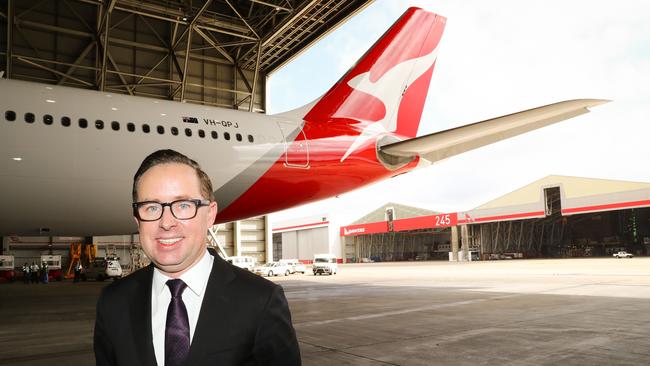Qantas facing cut to first-half earnings
Qantas shares ended higher despite lower international airfares hitting the airline’s revenue.

Lower international airfares have pushed Qantas’s first quarter revenue lower, while its capacity is tipped to grow at a slower rate than expected through the first half.
The developments are tipped to force earnings down 10 per cent through the first six months of the fiscal year.
Qantas shares initially fell as much as 9.1 per cent to a five-month low of $2.67 after the profit warning, but later rebounded to close 4.1 per cent stronger at $3.06.
For the three months to September 30, the national carrier (QAN) booked a three per cent slide in sales amid lacklustre domestic demand and strong international competition.
Qantas noted a “subdued” local environment for the first two months of the fiscal year in particular, but remained confident of a robust showing for the remainder of the calendar year as cost-cutting measures bear fruit offshore.
“This first quarter performance has positioned Qantas to deliver another strong first half result in 2017,” chief executive Alan Joyce said.
“Like most carriers globally, we are seeing international airfares below where they were 12 months ago, but the impact of that is tempered by the competitive advantages we’ve been working hard to fortify including our strong domestic position and diversified Loyalty business.”
Despite the muted demand at home, the airline’s core domestic operations are seen as “stable”, with profitable margins entrenched in the wake of a vigorous market share battle with Virgin.
“Qantas Domestic, Jetstar Domestic and Qantas Loyalty all continue to perform well with high operating margins in a stable market,” Mr Joyce said.
“We remain disciplined on cost, continue to manage capacity carefully to match demand, and have secured the benefit of lower fuel prices through our hedging.”
For the first half, Qantas is forecasting underlying earnings before tax of $800-$850 million, down around 10 per cent on last year’s corresponding $921m result.
The lower result is expected after the group trimmed expected first half capacity growth from 2 to 3 per cent down to 1.5 to 2 per cent.
This includes a 1 per cent decline in domestic capacity, and a 3.5 per cent increase in international capacity.
This compares unfavourably to earlier projections of flat to -1 per cent for domestic and +4 per cent for international.




To join the conversation, please log in. Don't have an account? Register
Join the conversation, you are commenting as Logout